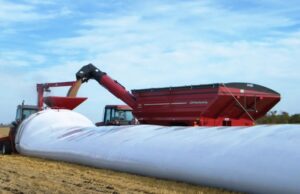It is not a secret that one of the most important parameters for the sale of eggs is a yolk color. Both processing industry and consumers are equally interested in eggs with the intensive yellow color of yolks. It is believed that eggs with brown shell have darker yolks. When it is so, it can be explained by the fact that the majority of such eggs are produced in private households where hens are fed to a certain extent differently than hens kept at large farms.
Actually, for coloring of yolks, hens digest a coloring substance contained in feed – xanthophyll. The most important source of this substance is yellow corn, green feed, and alfalfa grass flour. A similar result can be achieved when 40-50% yellow corn and 3% of alfalfa flour of high quality are added to the feed
That is one of the main factors influencing yolk color, products quality and poultry health is full-value feeding. In the structure of the cost of eggs production, feed accounts for 60-70%. One can decrease the feed input per a unit of products and increase the level of their digestion, first, by using high-quality feed resources and proper preparation of feeds for feeding; second, by using the optimal recipes of combined feeds for respective poultry groups; third, by selecting respective regimes and mechanisms of feeding. Feed for the breeding poultry should have a balanced composition of nutritious elements in accordance with the recommendations of the crossbreed originator.
For the purposes of poultry feeding, three types of feeding are mainly used – wet, dry, and combined. The most promising and acceptable type of feeding in all specialized farms is dry feed using full-value compound feeds.
The basis of full-ration feeds is formed by energy-rich but protein poor grain crops (50-70%). The maximum input norm may be: corn, wheat – 60-70%, barley, oats, sorghum, millet – 30-40%, barley and oats without film – 50-60%. Beans are added in a limited amount due to the inhibitors of digesting ferments that they contain: peas – 7-15%, beans – 5-10%, alkaloid-free lupine – 3-7%. As a source of protein one can use meals and presscakes, and in order to increase energy concentration in the rations – animal and vegetable fats, and phosphatides (the waste of vegetable oils production).
The dynamics of production of combined poultry feeds demonstrate the trend toward a sustainable growth. In the structure of feed production for poultry farming, the share of combined feeds for the egg industry, according to market operators, accounts for about one third.
The main facilities for production of combined poultry feeds are concentrated in enterprises located in Kyiv and Donetsk regions. In 2007, according to the official data, they accounted for about 51% of the total volume of production of this type of combined feeds. A similar production structure, according to market operators, continued into 2008.
In its turn, the high level of provision of feeds was facilitated by the high grain harvest in Ukraine in 2008 and the decrease of prices for grain crops. At the same time, the growth of prices for mineral and vitamin components, protein, amino-acids led to the increase of prices for ready combined feeds that decreased the demand for them from small poultry farms.
In addition to the feed base, the used equipment and technologies play a great role in production of breeding eggs. The task of parent stock, incubation and young birds departments is to staff an industrial stock. These production units are the most complicated and quite important technological elements in food eggs production.
You can obtain more detailed information on main issues related to the Ukrainian eggs market development from the research “Ukraine: Egg Poultry Farming and Chicken Eggs Market” prepared by ProAgro. The problems of poultry farming and eggs production in Ukraine are presented in detail in the study, including the key development trends, problems and prospects, data on feed resources, feeds production and consumption, commercial eggs production, technologies used, equipment and many other issues. Furthermore, production indicators concerning poultry farming and chicken egg market are discussed; requirements as for chicken eggs production and consumers’ preferences are also addressed in the research.






